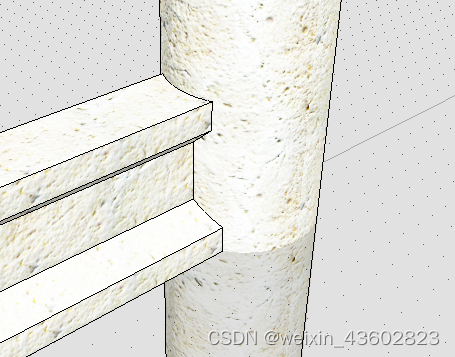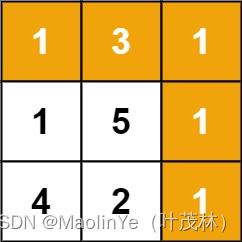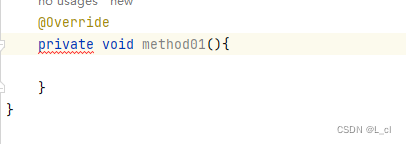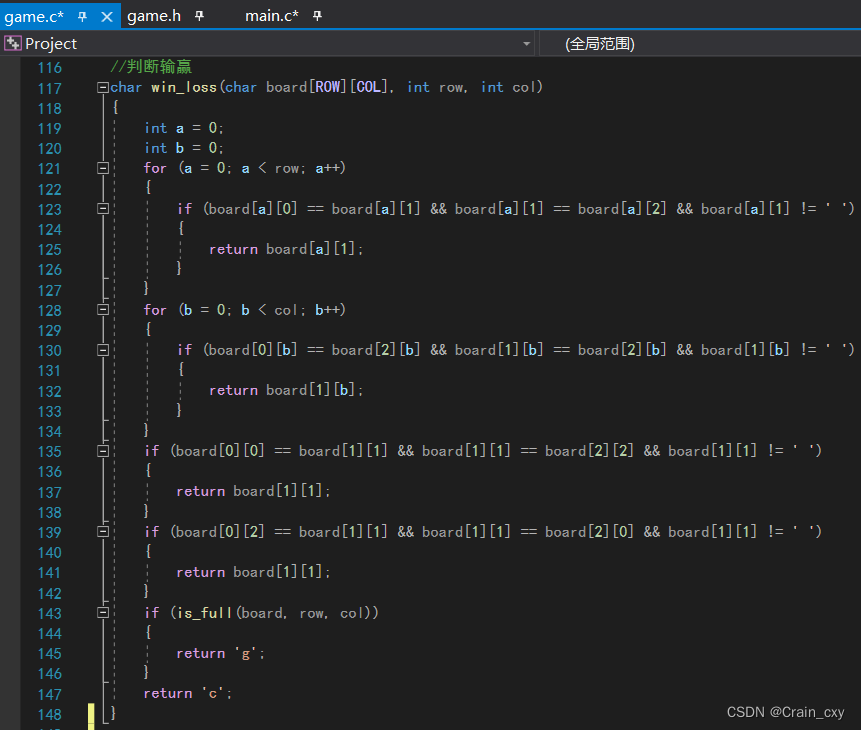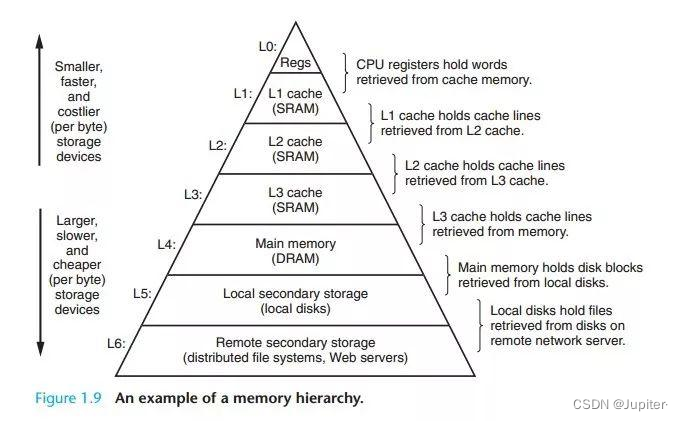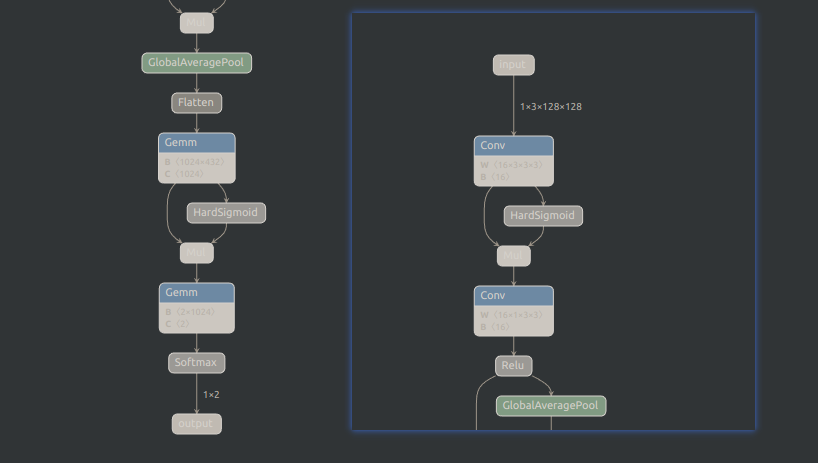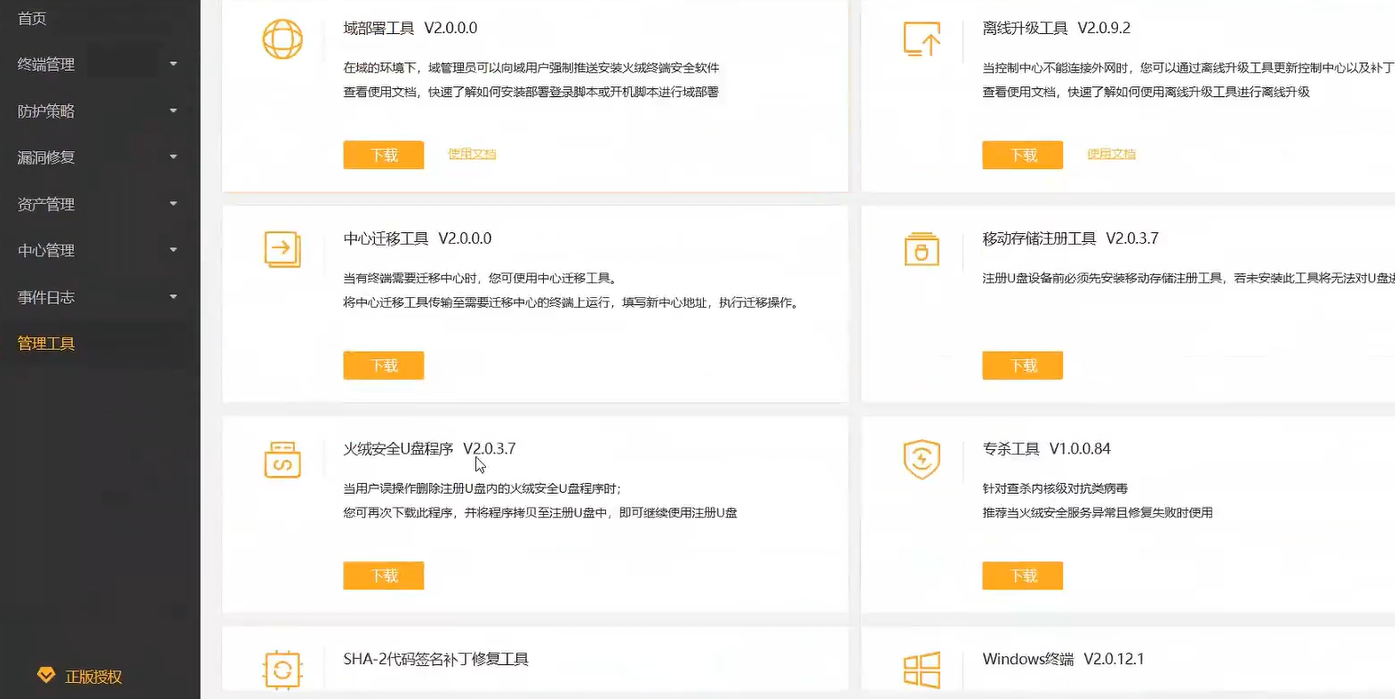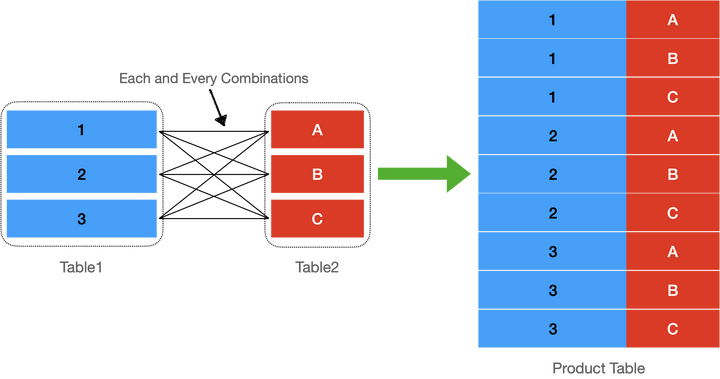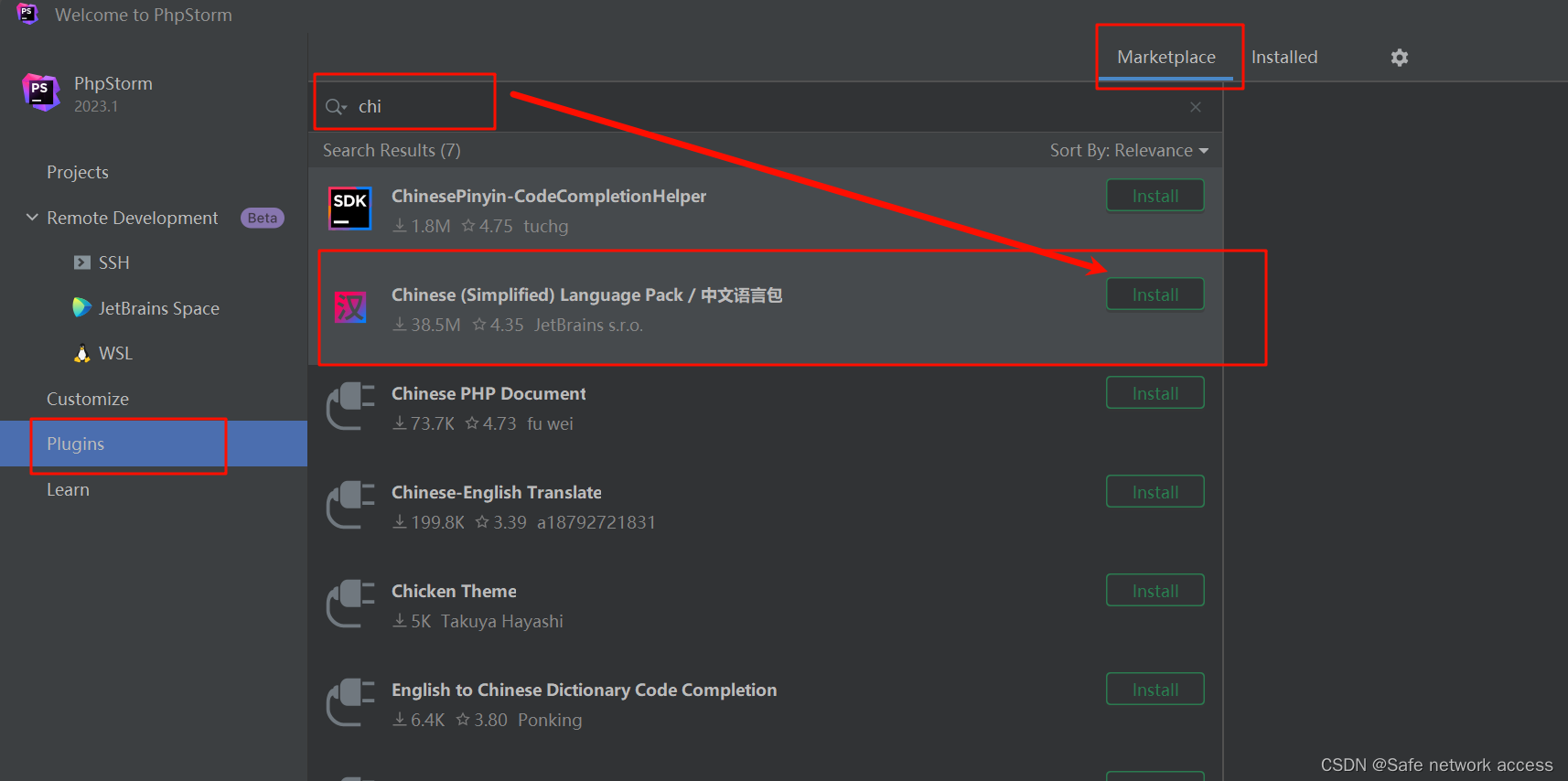一、USB设备描述符

一个USB设备描述符中可以有多个配置描述符,即USB设备可以有多种配置;一个配置描述符中可以有多个接口描述符,即USB设备可以支持多种功能(接口);一个接口描述符中可以有多个端点描述符。
一设备至少要包含设备描述符、配置描述符和接口描述符,如果USB设备没有端点描述符,则它仅仅用默认管道与主机进行数据传输。
接口,表示逻辑上的设备,比如USB声卡可以分为接口1-录音设备,接口2-播放设备。
访问设备时,即访问某个接口,接口表示逻辑设备。
传输数据时,即读写某个端口,端口是数据通道。
1.1 设备描述符
/* USB_DT_DEVICE: Device descriptor */
struct usb_device_descriptor {
__u8 bLength; //该结构体大小
__u8 bDescriptorType; //描述符类型 (此处应为0x01,即设备描述符)
__le16 bcdUSB; //usb版本号 200 -> USB2.0
__u8 bDeviceClass; //设备类
__u8 bDeviceSubClass; //设备类子类
__u8 bDeviceProtocol; //设备协议,以上三点都是USB官方定义
__u8 bMaxPacketSize0; //端点0最大包大小 (只能为8,16,32,64)
__le16 idVendor; //厂家id
__le16 idProduct; //产品id
__le16 bcdDevice; //设备出厂编号
__u8 iManufacturer; //描述厂商信息的字符串描述符的索引值
__u8 iProduct; //描述产品信息的字串描述符的索引值
__u8 iSerialNumber; //描述设备序列号信息的字串描述符的索引值
__u8 bNumConfigurations; //可能的配置描述符的数目
} __attribute__ ((packed));
1.2 配置描述符
struct usb_config_descriptor {
__u8 bLength; //该结构体大小
__u8 bDescriptorType;//描述符类型(本结构体中固定为0x02)
__le16 wTotalLength; //该配置下,信息的总长度(包括配置,接口,端点和设备类及厂商定义的描述符)
__u8 bNumInterfaces; //接口的个数
__u8 bConfigurationValue; //Set_Configuration命令所需要的参数值,用来选定此配置
__u8 iConfiguration; //描述该配置的字符串描述的索引值
__u8 bmAttributes;//供电模式的选择
__u8 bMaxPower;//设备从总线提取的最大电流
} __attribute__ ((packed));
1.3 接口描述符
struct usb_interface_descriptor {
__u8 bLength; //该结构体大小
__u8 bDescriptorType;//接口描述符的类型编号(0x04)
__u8 bInterfaceNumber; //该接口的编号
__u8 bAlternateSetting; //备用的接口描述符编号
__u8 bNumEndpoints; //该接口使用的端点数,不包括端点0
__u8 bInterfaceClass; //接口类
__u8 bInterfaceSubClass; //子类
__u8 bInterfaceProtocol; //协议
__u8 iInterface;//描述此接口的字串描述表的索引值
} __attribute__ ((packed));
配置描述符中包含了一个或多个接口描述符,这里的“接口”并不是指物理存在的接口,在这里把它称之为“功能”更易理解些,例如一个设备既有录音的功能又有扬声器的功能,则这个设备至少就有两个“接口”。
1.4 端点描述符
/* USB_DT_ENDPOINT: Endpoint descriptor */
struct usb_endpoint_descriptor {
__u8 bLength; //端点描述符字节数大小(7个字节)
__u8 bDescriptorType;//端点描述符类型编号(0x05)
__u8 bEndpointAddress; //此描述表所描述的端点的地址、方向 :
// bit3~bit0:端点号,bit6~bit4:保留,
// bit7:方向,如果是控制端点则忽略,0-输出端点(主机到设备)1-输入端点(设备到主机)
__u8 bmAttributes; // 端点特性,bit1~bit0 表示传输类型,其他位保留
// 00-控制传输 01-实时传输 10-批量传输 11-中断传输
__le16 wMaxPacketSize; //端点收、发的最大包大小
__u8 bInterval; // 中断传输模式中主机查询端点的时间间隔。
// 对于实时传输的端点此域必需为1,表示周期为1ms。对于中断传输的端点此域值的范围为1ms到255ms
/* NOTE: these two are _only_ in audio endpoints. */
/* use USB_DT_ENDPOINT*_SIZE in bLength, not sizeof. */
__u8 bRefresh;
__u8 bSynchAddress;
} __attribute__ ((packed));
端点是设备与主机之间进行数据传输的逻辑接口,除配置使用的端点0(控制端点,一般一个设备只有一个控制端点)为双向端口外,其它均为单向。端点描述符描述了数据的传输类型、传输方向、数据包大小和端点号(也可称为端点地址)等。
除了描述符中描述的端点外,每个设备必须要有一个默认的控制型端点,地址为0,它的数据传输为双向,而且没有专门的描述符,只是在设备描述符中定义了它的最大包长度。主机通过此端点向设备发送命令,获得设备的各种描述符的信息,并通过它来配置设备。
1.5 字符描述符
struct usb_string_descriptor {
__u8 bLength; // 此描述表的字节数(bString域的数值N+2)
__u8 bDescriptorType; // 字串描述表类型(此处应为0x03)__le16 wData[1]; /* UTF-16LE encoded */
} __attribute__ ((packed));
1.6 人机接口描述符
USB 设备中有一大类就是 HID 设备,即 Human Interface Devices,人机接口设备。这类设备包括鼠标、键盘等,主要用于人与计算机进行交互。 它是 USB 协议最早支持的一种设备类。 HID 设备可以作为低速、全速、高速设备用。由于 HID 设备要求用户输入能得到及时响应,故其传输方式通常采用中断方式。
在 USB 协议中, HID 设备的定义放置在接口描述符中, USB 的设备描述符和配置描述符中不包含 HID 设备的信息。因此,对于某些特定的 HID 设备,可以定义多个接口,只有其中一个接口为 HID 设备类即可。
1.7 USB描述符的类型值

二、USB总线驱动程序
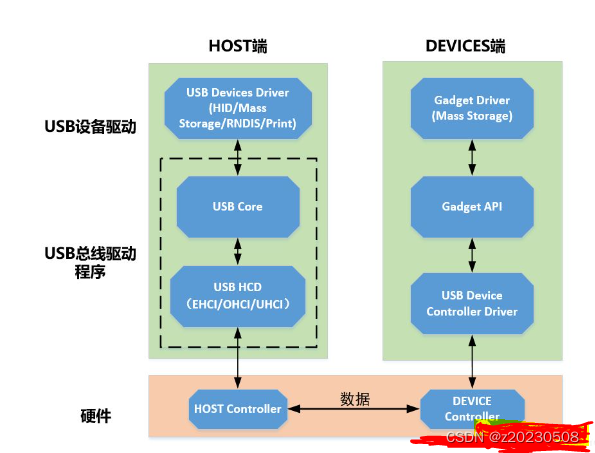
2.1 usb core
初始化内核USB总线及提供USB相关API,为设备驱动和HCD的交互提供桥梁。
usb_init
static int __init usb_init(void)
{
int retval;
if (usb_disabled()) {
pr_info("%s: USB support disabled\n", usbcore_name);
return 0;
}
usb_init_pool_max();usb_debugfs_init();
usb_acpi_register();
retval = bus_register(&usb_bus_type); -----------------(1)
if (retval)
goto bus_register_failed;
retval = bus_register_notifier(&usb_bus_type, &usb_bus_nb);
if (retval)
goto bus_notifier_failed;
retval = usb_major_init();
if (retval)
goto major_init_failed;
retval = usb_register(&usbfs_driver); ---------------------------(2)
if (retval)
goto driver_register_failed;
retval = usb_devio_init();
if (retval)
goto usb_devio_init_failed;
retval = usb_hub_init(); -----------------------------------(3)
if (retval)
goto hub_init_failed;
retval = usb_register_device_driver(&usb_generic_driver, THIS_MODULE);-------(4)
if (!retval)
goto out;usb_hub_cleanup();
hub_init_failed:
usb_devio_cleanup();
usb_devio_init_failed:
usb_deregister(&usbfs_driver);
driver_register_failed:
usb_major_cleanup();
major_init_failed:
bus_unregister_notifier(&usb_bus_type, &usb_bus_nb);
bus_notifier_failed:
bus_unregister(&usb_bus_type);
bus_register_failed:
usb_acpi_unregister();
usb_debugfs_cleanup();
out:
return retval;
}
(1)USB是基于总线-驱动-设备模型的框架,其初始化阶段一个重点任务就是完成USB总线的创建。usb_bus_type提供了驱动和设备匹配的匹配函数,后面注册设备和驱动时会调用到。
usb_bus_type
struct bus_type usb_bus_type = {
.name = "usb",
.match = usb_device_match, //调用这个匹配函数
.uevent = usb_uevent,
.need_parent_lock = true,
};
使用bus_register接口注册USB总线,会创建出两条链表用来分别存放向USB总线注册的设备和驱动。如下:
int bus_register(struct bus_type *bus)
{
。。。。INIT_LIST_HEAD(&priv->interfaces);
__mutex_init(&priv->mutex, "subsys mutex", key);
klist_init(&priv->klist_devices, klist_devices_get, klist_devices_put); //设备链表
klist_init(&priv->klist_drivers, NULL, NULL); // 驱动链表retval = add_probe_files(bus);
if (retval)
goto bus_probe_files_fail;retval = bus_add_groups(bus, bus->bus_groups);
。。。。。。。
}
EXPORT_SYMBOL_GPL(bus_register);
另外一篇具体分析bus_register的具体做了哪些事情。
(2)usbfs_driver 是usb 接口驱动,注册接口驱动。一个设备可以有多个接口,每个接口对应着不同的功能。在usb总线注册USB接口驱动,该驱动被放在usb总线的驱动链表中。
usbfs_driver
struct usb_driver usbfs_driver = {
.name = "usbfs",
.probe = driver_probe,
.disconnect = driver_disconnect,
.suspend = driver_suspend,
.resume = driver_resume,
.supports_autosuspend = 1,
};
(3)初始化 usb hub, 初始化一个USB设备集线器,用来检测USB设备的连接和断开。
usb_hub_init()
int usb_hub_init(void)
{
if (usb_register(&hub_driver) < 0) { -----------------------(1)
printk(KERN_ERR "%s: can't register hub driver\n",
usbcore_name);
return -1;
}/*
* The workqueue needs to be freezable to avoid interfering with
* USB-PERSIST port handover. Otherwise it might see that a full-speed
* device was gone before the EHCI controller had handed its port
* over to the companion full-speed controller.
*/
hub_wq = alloc_workqueue("usb_hub_wq", WQ_FREEZABLE, 0); --------(2)
if (hub_wq)
return 0;/* Fall through if kernel_thread failed */
usb_deregister(&hub_driver);
pr_err("%s: can't allocate workqueue for usb hub\n", usbcore_name);return -1;
}
(3.1)注册 hub_driver.
hu_driver
static struct usb_driver hub_driver = {
.name = "hub",
.probe = hub_probe,
.disconnect = hub_disconnect,
.suspend = hub_suspend,
.resume = hub_resume,
.reset_resume = hub_reset_resume,
.pre_reset = hub_pre_reset,
.post_reset = hub_post_reset,
.unlocked_ioctl = hub_ioctl,
.id_table = hub_id_table,
.supports_autosuspend = 1,
};
(3.2) 创建一个工作队列usb_hub_wq, 用来处理USB设备的断开、连接等事件。在内核低版本中,是创建了内核线程,khubd_task = kthread_run(hub_thread, NULL, "khubd"); 而在内核高版本是使用的工作队列。
接着向usb 总线注册一个hub设备,触发 hub_probe,把hub event 压入hub_wq 工作队列
hub_probe ->
hub_configure ->
usb_fill_int_urb(hub->urb, hdev, pipe, *hub->buffer, maxp, hub_irq,
hub, endpoint->bInterval);
// usb_fill_int_urb 接口创建了一个中断类型的 USB请求控制块
hub_irq ->
kick_hub_wq(hub) ->
queue_work(hub_wq, &hub->events); //hub events 压入hub_wq 队列
这个工作队列的处理函数是:hub_event
hub_probe->INIT_WORK(&hub->events, hub_event);
hub_event
static void hub_event(struct work_struct *work)
{
struct usb_device *hdev;
struct usb_interface *intf;
struct usb_hub *hub;
struct device *hub_dev;
u16 hubstatus;
u16 hubchange;
int i, ret;hub = container_of(work, struct usb_hub, events);
hdev = hub->hdev;
hub_dev = hub->intfdev;
intf = to_usb_interface(hub_dev);kcov_remote_start_usb((u64)hdev->bus->busnum);
dev_dbg(hub_dev, "state %d ports %d chg %04x evt %04x\n",
hdev->state, hdev->maxchild,
/* NOTE: expects max 15 ports... */
(u16) hub->change_bits[0],
(u16) hub->event_bits[0]);/* Lock the device, then check to see if we were
* disconnected while waiting for the lock to succeed. */
usb_lock_device(hdev);
if (unlikely(hub->disconnected))
goto out_hdev_lock;/* If the hub has died, clean up after it */
if (hdev->state == USB_STATE_NOTATTACHED) {
hub->error = -ENODEV;
hub_quiesce(hub, HUB_DISCONNECT);
goto out_hdev_lock;
}/* Autoresume */
ret = usb_autopm_get_interface(intf);
if (ret) {
dev_dbg(hub_dev, "Can't autoresume: %d\n", ret);
goto out_hdev_lock;
}/* If this is an inactive hub, do nothing */
if (hub->quiescing)
goto out_autopm;if (hub->error) {
dev_dbg(hub_dev, "resetting for error %d\n", hub->error);ret = usb_reset_device(hdev);
if (ret) {
dev_dbg(hub_dev, "error resetting hub: %d\n", ret);
goto out_autopm;
}hub->nerrors = 0;
hub->error = 0;
}/* deal with port status changes */ //hub 的端口变化处理
for (i = 1; i <= hdev->maxchild; i++) {
struct usb_port *port_dev = hub->ports[i - 1];if (test_bit(i, hub->event_bits)
|| test_bit(i, hub->change_bits)
|| test_bit(i, hub->wakeup_bits)) {
/*
* The get_noresume and barrier ensure that if
* the port was in the process of resuming, we
* flush that work and keep the port active for
* the duration of the port_event(). However,
* if the port is runtime pm suspended
* (powered-off), we leave it in that state, run
* an abbreviated port_event(), and move on.
*/
pm_runtime_get_noresume(&port_dev->dev);
pm_runtime_barrier(&port_dev->dev);
usb_lock_port(port_dev);
port_event(hub, i);
usb_unlock_port(port_dev);
pm_runtime_put_sync(&port_dev->dev);
}
}/* deal with hub status changes */
if (test_and_clear_bit(0, hub->event_bits) == 0)
; /* do nothing */
else if (hub_hub_status(hub, &hubstatus, &hubchange) < 0)
dev_err(hub_dev, "get_hub_status failed\n");
else {
if (hubchange & HUB_CHANGE_LOCAL_POWER) {
dev_dbg(hub_dev, "power change\n");
clear_hub_feature(hdev, C_HUB_LOCAL_POWER);
if (hubstatus & HUB_STATUS_LOCAL_POWER)
/* FIXME: Is this always true? */
hub->limited_power = 1;
else
hub->limited_power = 0;
}
if (hubchange & HUB_CHANGE_OVERCURRENT) {
u16 status = 0;
u16 unused;dev_dbg(hub_dev, "over-current change\n");
clear_hub_feature(hdev, C_HUB_OVER_CURRENT);
msleep(500); /* Cool down */
hub_power_on(hub, true);
hub_hub_status(hub, &status, &unused);
if (status & HUB_STATUS_OVERCURRENT)
dev_err(hub_dev, "over-current condition\n");
}
}out_autopm:
/* Balance the usb_autopm_get_interface() above */
usb_autopm_put_interface_no_suspend(intf);
out_hdev_lock:
usb_unlock_device(hdev);/* Balance the stuff in kick_hub_wq() and allow autosuspend */
usb_autopm_put_interface(intf);
kref_put(&hub->kref, hub_release);kcov_remote_stop();
}
(4) usb_register_device_driver(&usb_generic_driver, THIS_MODULE),向usb总线驱动链表中,注册 usb 设备驱动 usb_generic_driver。
usb_generic_driver
//drivers/usb/core/generic.c
struct usb_device_driver usb_generic_driver = {
.name = "usb",
.match = usb_generic_driver_match,
.probe = usb_generic_driver_probe,
.disconnect = usb_generic_driver_disconnect,
#ifdef CONFIG_PM
.suspend = usb_generic_driver_suspend,
.resume = usb_generic_driver_resume,
#endif
.supports_autosuspend = 1,
};
2.2 注册USB设备驱动
路径: drivers/usb/core/driver.c
int usb_register_device_driver(struct usb_device_driver *new_udriver,
struct module *owner)
{
int retval = 0;if (usb_disabled())
return -ENODEV;new_udriver->drvwrap.for_devices = 1;
new_udriver->drvwrap.driver.name = new_udriver->name;
new_udriver->drvwrap.driver.bus = &usb_bus_type;//usb 设备匹配,先会调用usb_probe_device,然后在该接口中调用driver的probe
new_udriver->drvwrap.driver.probe = usb_probe_device;
new_udriver->drvwrap.driver.remove = usb_unbind_device;
new_udriver->drvwrap.driver.owner = owner;
new_udriver->drvwrap.driver.dev_groups = new_udriver->dev_groups;retval = driver_register(&new_udriver->drvwrap.driver);
if (!retval) {
pr_info("%s: registered new device driver %s\n",
usbcore_name, new_udriver->name);
/*
* Check whether any device could be better served with
* this new driver
*/
bus_for_each_dev(&usb_bus_type, NULL, new_udriver,
__usb_bus_reprobe_drivers);
} else {
pr_err("%s: error %d registering device driver %s\n",
usbcore_name, retval, new_udriver->name);
}return retval;
}
EXPORT_SYMBOL_GPL(usb_register_device_driver);
usb_register_device_driver 注册一个通用USB设备驱动,而不是USB接口驱动。
2.3 usb_register 和 usb_register_device_driver 区别
usb_register 注册一个USB接口驱动,一个设备可以有多个接口,一个接口表示一种功能。比如USB声卡设备,有两个接口,一个播放接口,一个录音接口。
//drivers/usb/core/driver.c
#define usb_register(driver) \
usb_register_driver(driver, THIS_MODULE, KBUILD_MODNAME)
int usb_register_driver(struct usb_driver *new_driver, struct module *owner,
const char *mod_name)
{
int retval = 0;if (usb_disabled())
return -ENODEV;new_driver->drvwrap.for_devices = 0;
new_driver->drvwrap.driver.name = new_driver->name;
new_driver->drvwrap.driver.bus = &usb_bus_type;// 对应的usb接口“设备”被匹配时,首先会调用usb_probe_interface,然后在该接口中调用driver的probe
new_driver->drvwrap.driver.probe = usb_probe_interface;
new_driver->drvwrap.driver.remove = usb_unbind_interface;
new_driver->drvwrap.driver.owner = owner;
new_driver->drvwrap.driver.mod_name = mod_name;
new_driver->drvwrap.driver.dev_groups = new_driver->dev_groups;
spin_lock_init(&new_driver->dynids.lock);
INIT_LIST_HEAD(&new_driver->dynids.list);retval = driver_register(&new_driver->drvwrap.driver);
if (retval)
goto out;retval = usb_create_newid_files(new_driver);
if (retval)
goto out_newid;pr_info("%s: registered new interface driver %s\n",
usbcore_name, new_driver->name);out:
return retval;out_newid:
driver_unregister(&new_driver->drvwrap.driver);pr_err("%s: error %d registering interface driver %s\n",
usbcore_name, retval, new_driver->name);
goto out;
}
EXPORT_SYMBOL_GPL(usb_register_driver);
总结:USB core注册了一个USB总线,并向USB总线中注册了三个驱动,分别是USB接口驱动、HUB驱动、USB设备驱动。其中在注册HUB驱动前创建了一个hub_wq 工作队列,用来处理hub上USB设备事件,比如插入和拔出;在HUB驱动的probe函数中,创建了一个urb并为其注册了一个timer中断处理函数hub_irq,hub wq 处理USB设备事件。
三、USB主机控制器驱动(HCD)
usb 主机控制器驱动 注册,有的使用platform_dirver 注册进系统,有的使用 pci_driver 注册进系统。具体使用哪种方式注册进系统,是根据usb控制器的硬件连接方式决定的。
我的PC机的XHCI驱动,就是pci_driver 方式

3.1下面分析以 platform 总线注册的OHCI主控驱动。
usb 主机控制器设备
// arch/arm/mach-s3c/mach-smdk2440.c
MACHINE_START(S3C2440, "SMDK2440")
/* Maintainer: Ben Dooks <ben-linux@fluff.org> */
.atag_offset = 0x100,.init_irq = s3c2440_init_irq,
.map_io = smdk2440_map_io,
.init_machine = smdk2440_machine_init,
.init_time = smdk2440_init_time,
MACHINE_ENDstatic void __init smdk2440_machine_init(void)
{
s3c24xx_fb_set_platdata(&smdk2440_fb_info);
s3c_i2c0_set_platdata(NULL);
/* Configure the I2S pins (GPE0...GPE4) in correct mode */
s3c_gpio_cfgall_range(S3C2410_GPE(0), 5, S3C_GPIO_SFN(2),
S3C_GPIO_PULL_NONE);
platform_add_devices(smdk2440_devices, ARRAY_SIZE(smdk2440_devices));
smdk_machine_init();
}static struct platform_device *smdk2440_devices[] __initdata = {
&s3c_device_ohci,
&s3c_device_lcd,
&s3c_device_wdt,
&s3c_device_i2c0,
&s3c_device_iis,
};// arch/arm/mach-s3c/devs.c
struct platform_device s3c_device_ohci = {
.name = "s3c2410-ohci",
.id = -1,
.num_resources = ARRAY_SIZE(s3c_usb_resource),
.resource = s3c_usb_resource,
.dev = {
.dma_mask = &samsung_device_dma_mask,
.coherent_dma_mask = DMA_BIT_MASK(32),
}
};
};
usb 主机控制器 驱动
// .config
CONFIG_ARCH_S3C2410=y// drivers/usb/host/ohci-s3c2410.c
static int __init ohci_s3c2410_init(void)
{
if (usb_disabled())
return -ENODEV;pr_info("%s: " DRIVER_DESC "\n", hcd_name);
ohci_init_driver(&ohci_s3c2410_hc_driver, NULL); --------------------(1)/*
* The Samsung HW has some unusual quirks, which require
* Sumsung-specific workarounds. We override certain hc_driver
* functions here to achieve that. We explicitly do not enhance
* ohci_driver_overrides to allow this more easily, since this
* is an unusual case, and we don't want to encourage others to
* override these functions by making it too easy.
*/ohci_s3c2410_hc_driver.hub_status_data = ohci_s3c2410_hub_status_data;
ohci_s3c2410_hc_driver.hub_control = ohci_s3c2410_hub_control;return platform_driver_register(&ohci_hcd_s3c2410_driver);--------------(2)
}
module_init(ohci_s3c2410_init);
static struct platform_driver ohci_hcd_s3c2410_driver = {
.probe = ohci_hcd_s3c2410_probe,
.remove = ohci_hcd_s3c2410_remove,
.shutdown = usb_hcd_platform_shutdown,
.driver = {
.name = "s3c2410-ohci",
.pm = &ohci_hcd_s3c2410_pm_ops,
.of_match_table = ohci_hcd_s3c2410_dt_ids,
},
};
(1) 调用 ohci_init_driver 把ohci_hc_driver 主控驱动赋值给ohci_s3c2410_hc_driver。
下面来分析ohci_init_driver
/*
* Generic structure: This gets copied for platform drivers so that
* individual entries can be overridden as needed.
*///ohci_hc_driver 是内核抽象出的通用驱动
static const struct hc_driver ohci_hc_driver = {
.description = hcd_name,
.product_desc = "OHCI Host Controller",
.hcd_priv_size = sizeof(struct ohci_hcd),/*
* generic hardware linkage
*/
.irq = ohci_irq,
.flags = HCD_MEMORY | HCD_DMA | HCD_USB11,/*
* basic lifecycle operations
*/
.reset = ohci_setup,
.start = ohci_start,
.stop = ohci_stop,
.shutdown = ohci_shutdown,/*
* managing i/o requests and associated device resources
*/
.urb_enqueue = ohci_urb_enqueue,
.urb_dequeue = ohci_urb_dequeue,
.endpoint_disable = ohci_endpoint_disable,/*
* scheduling support
*/
.get_frame_number = ohci_get_frame,/*
* root hub support
*/
.hub_status_data = ohci_hub_status_data,
.hub_control = ohci_hub_control,
#ifdef CONFIG_PM
.bus_suspend = ohci_bus_suspend,
.bus_resume = ohci_bus_resume,
#endif
.start_port_reset = ohci_start_port_reset,
};
void ohci_init_driver(struct hc_driver *drv,
const struct ohci_driver_overrides *over)
{
/* Copy the generic table to drv and then apply the overrides */
*drv = ohci_hc_driver; //把ohci_hc_driver 主控驱动给注册进系统的主控设备驱动里if (over) {
drv->product_desc = over->product_desc;
drv->hcd_priv_size += over->extra_priv_size;
if (over->reset)
drv->reset = over->reset;
}
}
EXPORT_SYMBOL_GPL(ohci_init_driver);
上面提到的ohci_hc_driver 通用驱动赋值给ohci_s3c2410_hc_driver 后,如何使用呢?
在platform 总线设备和驱动匹配后,会调用ohci_hcd_s3c2410_probe,然后
hcd = usb_create_hcd(&ohci_s3c2410_hc_driver, &dev->dev, "s3c24xx"); 把ohci_s3c2410_hc_driver 赋值到新创建hcd中, hcd->driver = ohci_s3c2410_hc_driver;
再然后usb_add_hcd 向系统增加hcd。
(2)ohci_hcd_s3c2410_driver 驱动通过platform 注册进系统。
主机控制器 设备和驱动匹配
//drivers/base/*
platform_driver_register->
driver_register->
bus_add_driver->
driver_attach->
bus_for_each_dev-> // 从平台总线的的设备链表中,取出每一项设备进行匹配
__driver_attach->driver_match_device->// 此总线类型为平台总线,其存在match函数,即调用platform_match进行匹配
device_driver_attach-> //通过driver_match_device 驱动和设备匹配后,这个函数负责绑定,调用really_probe
driver_probe_device->
really_probe->drv-probe
static int __driver_attach(struct device *dev, void *data)
{
......ret = driver_match_device(drv, dev);
..........
device_driver_attach(drv, dev);return 0;
}
// 平台总线
struct bus_type platform_bus_type = {
.name = "platform",
.dev_groups = platform_dev_groups,
.match = platform_match,
.uevent = platform_uevent,
.dma_configure = platform_dma_configure,
.pm = &platform_dev_pm_ops,
};
EXPORT_SYMBOL_GPL(platform_bus_type);
static int platform_match(struct device * dev, struct device_driver * drv)
{struct platform_device *pdev = to_platform_device(dev);
struct platform_driver *pdrv = to_platform_driver(drv);/* When driver_override is set, only bind to the matching driver */
if (pdev->driver_override)
return !strcmp(pdev->driver_override, drv->name);/* Attempt an OF style match first */
if (of_driver_match_device(dev, drv))
return 1;/* Then try ACPI style match */
if (acpi_driver_match_device(dev, drv))
return 1;/* Then try to match against the id table */
if (pdrv->id_table)
return platform_match_id(pdrv->id_table, pdev) != NULL;/* fall-back to driver name match */
return (strcmp(pdev->name, drv->name) == 0);
// 平台总线匹配设备和驱动的名称
}// ohci 设备 name = "s3c2410-ohci"
struct platform_device s3c_device_ohci = {
.name = "s3c2410-ohci",
.id = -1,
.num_resources = ARRAY_SIZE(s3c_usb_resource),
.resource = s3c_usb_resource,
.dev = {
.dma_mask = &samsung_device_dma_mask,
.coherent_dma_mask = DMA_BIT_MASK(32),
}
};// ohci 驱动 name = "s3c2410-ohci"
static struct platform_driver ohci_hcd_s3c2410_driver = {
.probe = ohci_hcd_s3c2410_probe,
.remove = ohci_hcd_s3c2410_remove,
.shutdown = usb_hcd_platform_shutdown,
.driver = {
.name = "s3c2410-ohci",
.pm = &ohci_hcd_s3c2410_pm_ops,
.of_match_table = ohci_hcd_s3c2410_dt_ids,
},
};
匹配成功调用驱动的probe函数。
driver_probe_device-> // 在此函数中匹配成功的话,就会去调用驱动的probe函数
really_probe->
drv->probe(dev)
usb 主机控制器驱动的probe 函数
ohci_hcd_s3c2410_probe ->
usb_add_hcd -> //向usb 增加主控驱动
rhdev = usb_alloc_dev //申请root hub
hcd->self.root_hub = rhdev
register_root_hub ->
usb_new_device ->
device_add ->
bus_attach_device ->
device_attach ->
bus_for_each_drv -> // 从usb总线的的驱动链表中,取出每一项驱动进行匹配
__device_attach ->
driver_match_device->
// 此总线类型为USB总线,其存在match函数,即调用usb_device_match进行匹配
driver_probe_device-> // 在此函数中匹配成功的话,就会去调用驱动的probe函数
really_probe->
drv->probe(dev)
上面在注册设备时,调用的__driver_attach进行绑定,现在注册驱动,调用__device_attach进行绑定。
接着分析:usb_device_match
static inline int is_usb_device(const struct device *dev)
{
return dev->type == &usb_device_type;
}/* Do the same for device drivers and interface drivers. */
static inline int is_usb_device_driver(struct device_driver *drv)
{
// struct device_driver 中 struct usbdrv_wrap 中的for_devices变量为1,则为USB设备驱动
// 上节USB Core中向USB总线注册的USB设备驱动中有将该变量设置为1(new_udriver->drvwrap.for_devices = 1;)
return container_of(drv, struct usbdrv_wrap, driver)->
for_devices;
}static int usb_device_match(struct device *dev, struct device_driver *drv)
{
// USB设备 和 USB接口“设备”分开处理
/* devices and interfaces are handled separately */
if (is_usb_device(dev)) {
// 处理USB设备
/* interface drivers never match devices */
if (!is_usb_device_driver(drv))
return 0;/* TODO: Add real matching code */
return 1;} else {
// 处理USB接口设备
struct usb_interface *intf;
struct usb_driver *usb_drv;
const struct usb_device_id *id;/* device drivers never match interfaces */
if (is_usb_device_driver(drv))
return 0;intf = to_usb_interface(dev);
usb_drv = to_usb_driver(drv);id = usb_match_id(intf, usb_drv->id_table);
if (id)
return 1;id = usb_match_dynamic_id(intf, usb_drv);
if (id)
return 1;
}return 0;
}
probe 向USB总线注册一个root hub 设备,从usb总线的的驱动链表中,取出每一项驱动进行匹配。在USB Core中已经向总线注册了三个驱动(USB设备驱动、USB接口驱动、USB hub驱动),根据条件匹配到USB设备驱动,则去调用USB设备驱动的probe函数。
usb 设备驱动的probe函数:
struct usb_device_driver usb_generic_driver = {
.name = "usb",
.match = usb_generic_driver_match,
.probe = usb_generic_driver_probe,
.disconnect = usb_generic_driver_disconnect,
#ifdef CONFIG_PM
.suspend = usb_generic_driver_suspend,
.resume = usb_generic_driver_resume,
#endif
.supports_autosuspend = 1,
};
usb_generic_driver_probe(struct usb_device *udev) -> // 从上分析流程知udev为USB root hub设备
usb_set_configuration ->
device_add -> // 创建USB接口设备,USB root hub接口设备被创建,device_add 又开始重复上面函数的流程
之后匹配到USB Core中注册的USB hub驱动,执行USB hub驱动的probe函数,该probe函数中,创建了一个urb并为其注册了一个中断处理函数hub_irq,hub_wq来处理USB设备事件(插入、拔出)。至此,系统启动初始化时关于USB的内容分析完成。USB Core和USB HCD的成功建立联系,为之后的USB设备驱动提供API。
